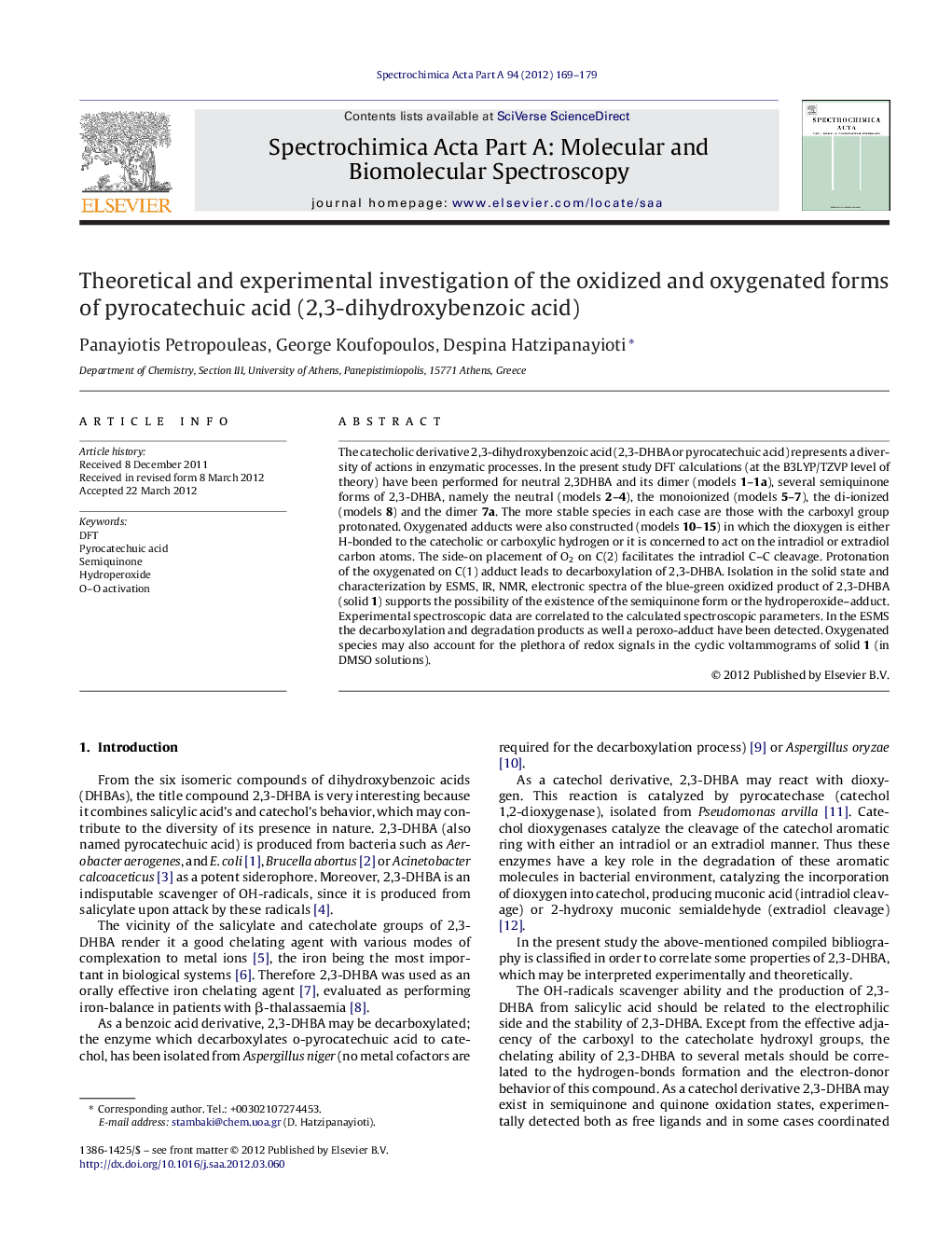| Article ID | Journal | Published Year | Pages | File Type |
|---|---|---|---|---|
| 1231417 | Spectrochimica Acta Part A: Molecular and Biomolecular Spectroscopy | 2012 | 11 Pages |
The catecholic derivative 2,3-dihydroxybenzoic acid (2,3-DHBA or pyrocatechuic acid) represents a diversity of actions in enzymatic processes. In the present study DFT calculations (at the B3LYP/TZVP level of theory) have been performed for neutral 2,3DHBA and its dimer (models 1–1a), several semiquinone forms of 2,3-DHBA, namely the neutral (models 2–4), the monoionized (models 5–7), the di-ionized (models 8) and the dimer 7a. The more stable species in each case are those with the carboxyl group protonated. Oxygenated adducts were also constructed (models 10–15) in which the dioxygen is either H-bonded to the catecholic or carboxylic hydrogen or it is concerned to act on the intradiol or extradiol carbon atoms. The side-on placement of O2 on C(2) facilitates the intradiol C–C cleavage. Protonation of the oxygenated on C(1) adduct leads to decarboxylation of 2,3-DHBA. Isolation in the solid state and characterization by ESMS, IR, NMR, electronic spectra of the blue-green oxidized product of 2,3-DHBA (solid 1) supports the possibility of the existence of the semiquinone form or the hydroperoxide–adduct. Experimental spectroscopic data are correlated to the calculated spectroscopic parameters. In the ESMS the decarboxylation and degradation products as well a peroxo-adduct have been detected. Oxygenated species may also account for the plethora of redox signals in the cyclic voltammograms of solid 1 (in DMSO solutions).
Graphical abstractFigure optionsDownload full-size imageDownload as PowerPoint slideHighlights► DFT calculations have been performed for semiquinones and oxygenated adducts of 2,3-DHBA. ► Interpretation of the intra/extradiol C–C bond cleavage by the dioxygen. ► The oxidized product of 2,3-DHBA have been isolated and characterized.
